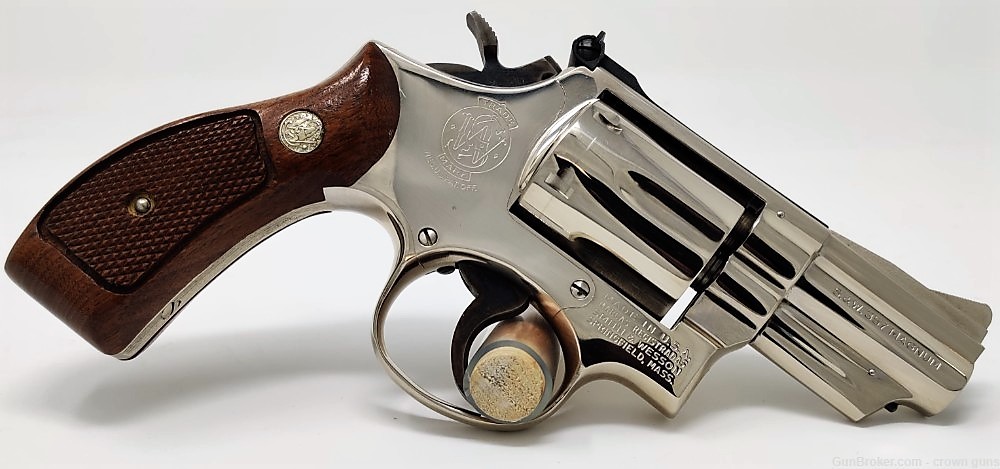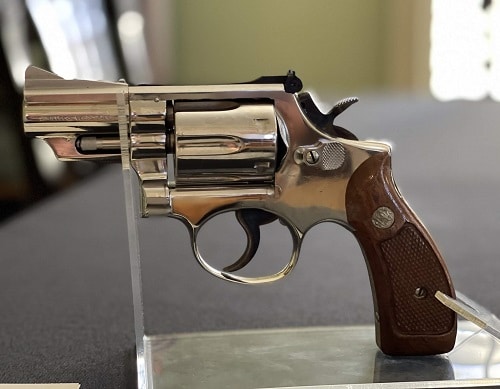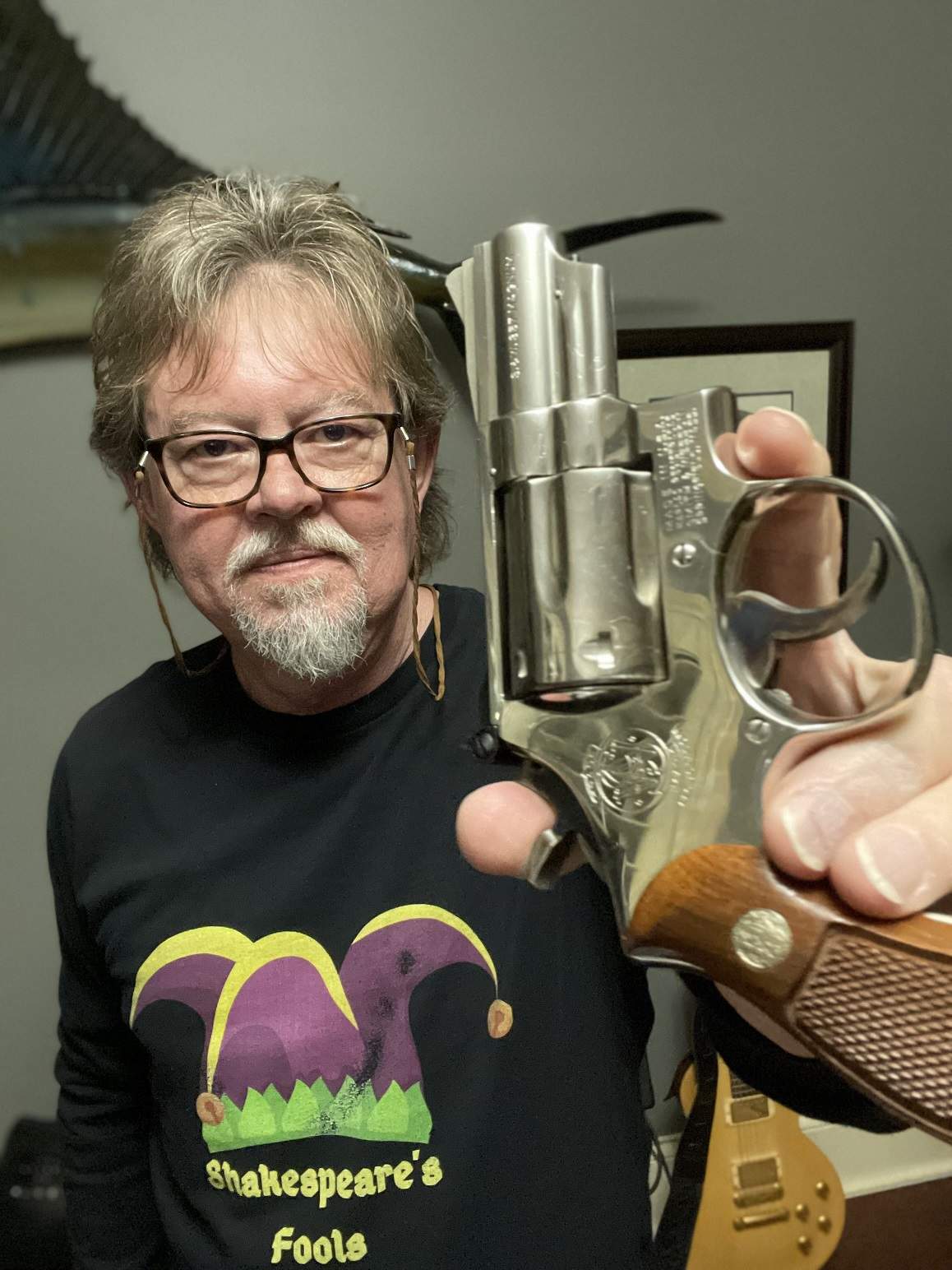From the Creator of the .357 Magnum: This is a 1972 Model 19-3 Smith & Wesson .357 Magnum
Bill Jordan asked Smith & Wesson to make a .357 Magnum on the medium-sized and lighter K frame, rather than the heavy N frame. Production of the 2 1/2" barrel Model 19 began in 1967. Handguns and long guns from the late 1940s through the 1970s are generally my favorites. I love the feel of this K frame gun.

| Year of DOM |
Begin Serial Number |
End Serial Number |
|---|---|---|
| 1970 | 1K1 | 1K39500 |
| 1970 | 2K1 | 2K22037 |
| 1971 | 1K39501 | 1K99999 |
| 1971 | 2K22038 | 2K55996 |
| 1971 | 3K1 | 3K73962 |
| 1972 | 2K55997 | 2K99999 |
| 1972 | 3K31280 | 3K99999 |
| 1972 | 4K1 | 4K1627 |
| 1972 | 5K1 | 5K6616 |
| 1973 | 4K1628 | 4K54104 |
| 1973 | 5K6617 | 5K73962 |
One thing I know for certain, the report of a short barrel .357 will get everyone's attention. They go bang real good.
The .357 Magnum is the oldest "magnum" handgun cartridge. Smith & Wesson played a major part in the development and success of the cartridge and revolver that went with it. Firearms writer and experimenter Philip Sharpe is credited for its development during the 1930s when police agencies were asking for a more powerful round. S&W's Douglas B. Wesson agreed to produce a new revolver that would handle "high-intensity" .38 Special loads, but only if Winchester would develop a new cartridge.
Elmer Keith, a well known author and wildcatter at the time, was experimenting with hand loading .38 Special ammunition beyond their original specifications, taking advantage of the newer and better designed firearm frames and metallurgy, and also played a major role in the development of the .357 Magnum. Winchester introduced the .357 Magnum, which was dimensionally identical to the .38 Special except for a .125 inch longer case, and the first revolvers (referred to as ".357 Magnum Models") were completed by S&W on April 8, 1935.
source: wikipedia.org


